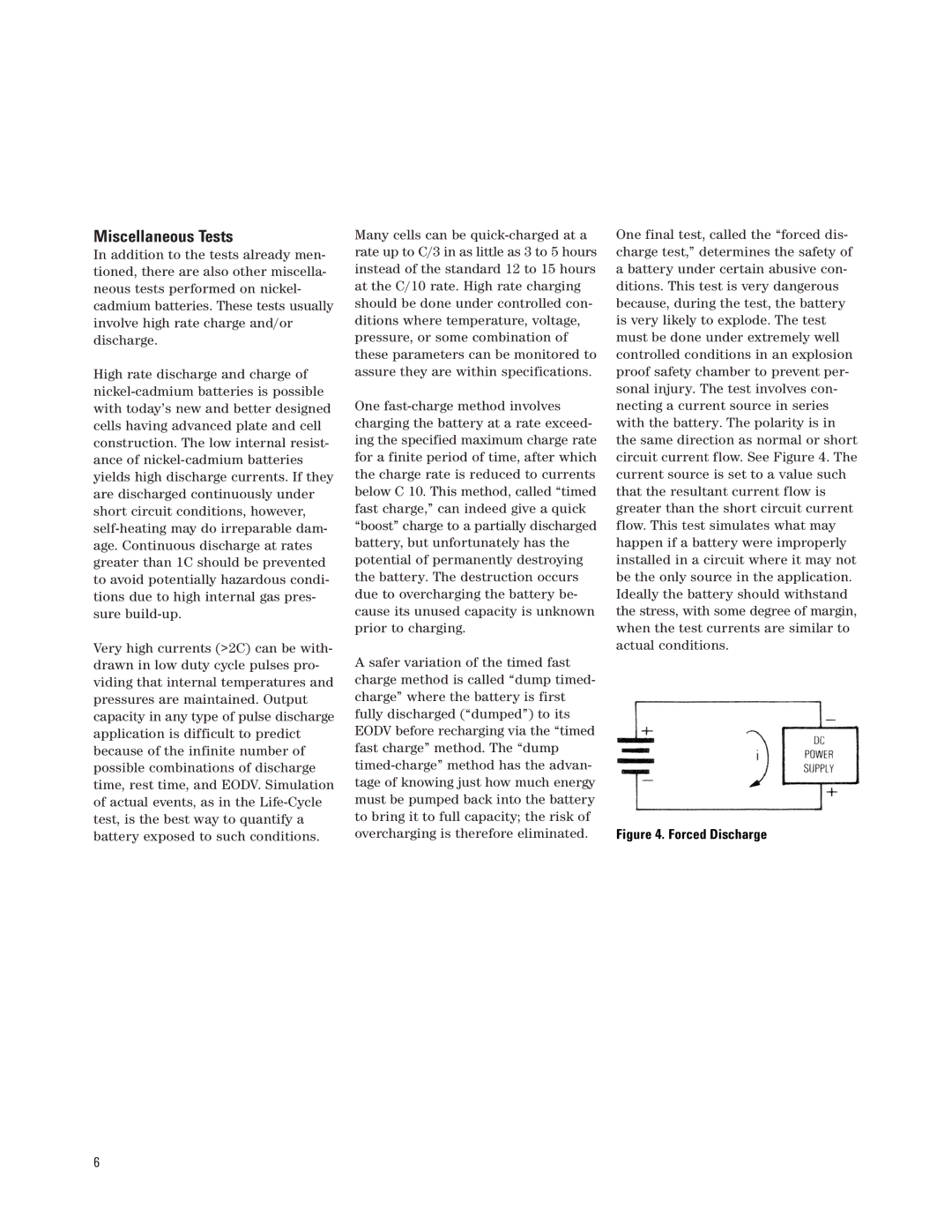
Miscellaneous Tests
In addition to the tests already men- tioned, there are also other miscella- neous tests performed on nickel- cadmium batteries. These tests usually involve high rate charge and/or discharge.
High rate discharge and charge of
Very high currents (>2C) can be with- drawn in low duty cycle pulses pro- viding that internal temperatures and pressures are maintained. Output capacity in any type of pulse discharge application is difficult to predict because of the infinite number of possible combinations of discharge time, rest time, and EODV. Simulation of actual events, as in the
Many cells can be
One
A safer variation of the timed fast charge method is called “dump timed- charge” where the battery is first fully discharged (“dumped”) to its EODV before recharging via the “timed fast charge” method. The “dump
One final test, called the “forced dis- charge test,” determines the safety of a battery under certain abusive con- ditions. This test is very dangerous because, during the test, the battery is very likely to explode. The test must be done under extremely well controlled conditions in an explosion proof safety chamber to prevent per- sonal injury. The test involves con- necting a current source in series with the battery. The polarity is in the same direction as normal or short circuit current flow. See Figure 4. The current source is set to a value such that the resultant current flow is greater than the short circuit current flow. This test simulates what may happen if a battery were improperly installed in a circuit where it may not be the only source in the application. Ideally the battery should withstand the stress, with some degree of margin, when the test currents are similar to actual conditions.
Figure 4. Forced Discharge
6
